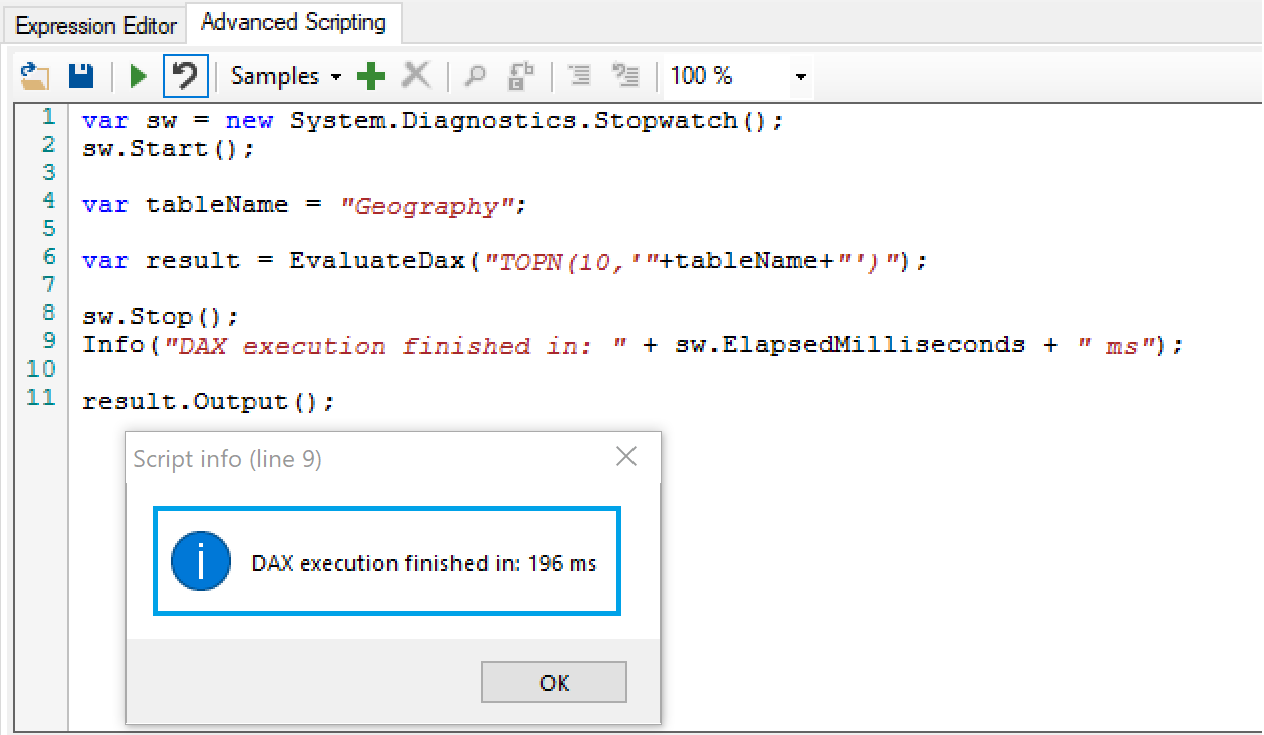

Click the "DAX Formatter" button to automatically format the code through Use the property grid in the lower right corner, to examine and set properties of objects, such as Format String, Description along with translations and perspective memberships. On the top right side of the main UI, you see the DAX Editor, which may be used to edit the DAX expression of any measure or calculated column in the model. Hit F2 to rename the currently selected object or multiselect and right-click to batch rename multiple objects. Right-clicking anywhere in the tree, will bring up a context menu with common actions, such as adding new measures, making an object hidden, duplicating objects, deleting objects, etc. Use the buttons just above the tree, to toggle display folders, hidden objects, certain types of objects, or filter out objects by names. Expanding a table will show all columns, measures and hierarchies within the table, grouped by their Display Folders. The tree on the left side of the screen, displays all tables in the Tabular Model. This is how the UI looks after a model has been loaded into Tabular Editor: More informationĪfter clicking "OK", you will be presented with a list of databases on the server. Note that although Tabular Editor can make changes to a Power BI model through the TOM, not all modeling operations are supported by Microsoft. The "Local Instance" dropdown, may be used to browse and connect to any running instances of Power BI Desktop or Visual Studio Integrated Workspaces. This also works with the new Azure Analysis Services PaaS. In the latter case, you will be prompted for a server name and optional credentials: option in the File menu (CTRL+O), or open an existing database from an instance of Analysis Services by choosing the Open > From DB.

Load a Model.bim file by choosing the Open > From File. That is: Create calculated columns, measures, hierarchies, perspectives, translations, display folders, and every other kind of fine-tuning you can think of.

The recommended workflow is to set up the tables and relationships using SSDT as normal, and then use Tabular Editor to do the rest.
#Tabular editor windows#
Operating system: Windows 7, Windows 8, Windows 10, Windows Server 2016, Windows Server 2019 or newer.Visit the official Microsoft documentation for Analysis Services Client Libraries. Version 2.13.Tabular Editor uses the Tabular Object Model to load and save metadata to and from Model.bim files or existing databases.Version 2.13.1 released (digitally signed).Version 2.13.2 released (digitally signed).Version 2.14.0 released (digitally signed).Version 2.14.1 released (digitally signed).

#Tabular editor download#
Download Latest Tabular Editor 2.x for SQL Server 2016, 2017, 2019, Azure Analysis Services or Power BI Premium.Tabular Editor 2.x is a free, open-source, tool that lets you easily manipulate and manage measures, calculated columns, display folders, perspectives and translations in Analysis Services Tabular and Power BI XMLA Models (from Compatibility Level 1200 and onwards).


 0 kommentar(er)
0 kommentar(er)
